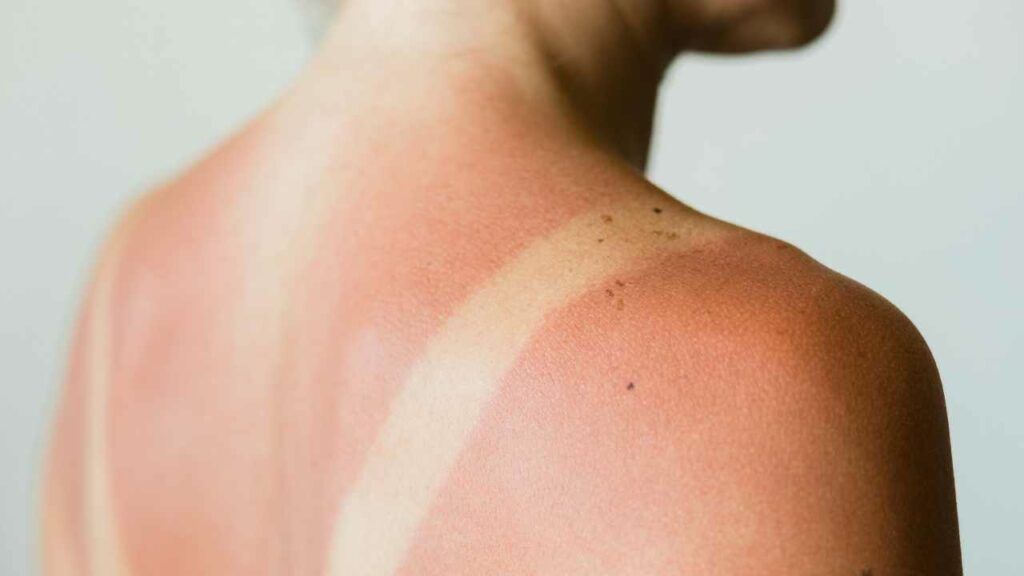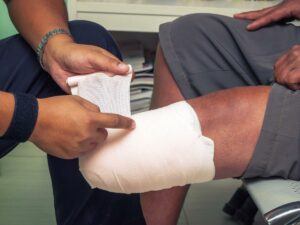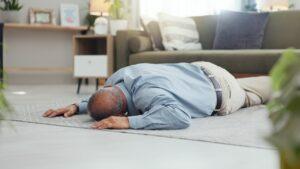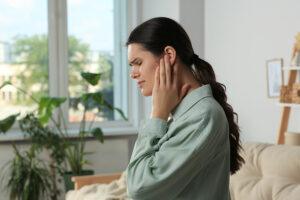The Vital Facts
- Over the past decade, nearly 5,000 people in NSW have sought emergency treatment for sunburn, mainly affecting those aged 5 to 24.
- In the 22/23 fiscal year, 818 individuals needed emergency care for sunburn, a 28% rise from the previous year.
- Childhood sun exposure significantly raises the risk of melanoma skin cancer.
Sunburn can occur ALL YEAR ROUND – not just during the heat of summer
If you’ve ever been outside during an Australian summer, you’ve most likely been sunburnt at least once in your life. It was a miserable time, wasn’t it?
Your skin was hot, then tight, then sore, then stinging, then flaking and finally itchy! It can make it painful to scratch, move and even shower.
But while you can’t ‘cure’ or ‘fix’ sunburn, there are some things to do to help ease the pain and make the next few days more bearable.
Immediate first aid steps for sunburn:
- Get out of the sun
- Keep your skin cool
- Apply cream or cool wraps
- Drink lots of water
- Monitor for infection
For more details on these steps, click here.
Read on to learn more about sunburn.
Here’s a summary of what you’ll find below:
- What is sunburn?
- Why is sunburn so bad?
- What are the symptoms of sunburn?
- First Aid for sunburn
- When you should see a doctor for sunburn
- How to prevent sunburn
What is Sunburn?
Sunburn is when your skin gets red, hot, and painful after being exposed to too much sunlight. This happens because the sun’s ultraviolet (UV) rays damage your skin cells, causing your skin to sting, blister and crack depending on the severity. The more time you spend in the sun without protection, the higher the risk of getting sunburnt.
Why is Sunburn so Bad?
Aside from being painful, it’s well known that sunburn increases the risk of skin cancers like melanoma, which is particularly common in Australia.
It also ages your skin prematurely, leading to wrinkles and sunspots. So if you want to keep looking young, stay out of the sun!
What are the Symptoms of Sunburn?
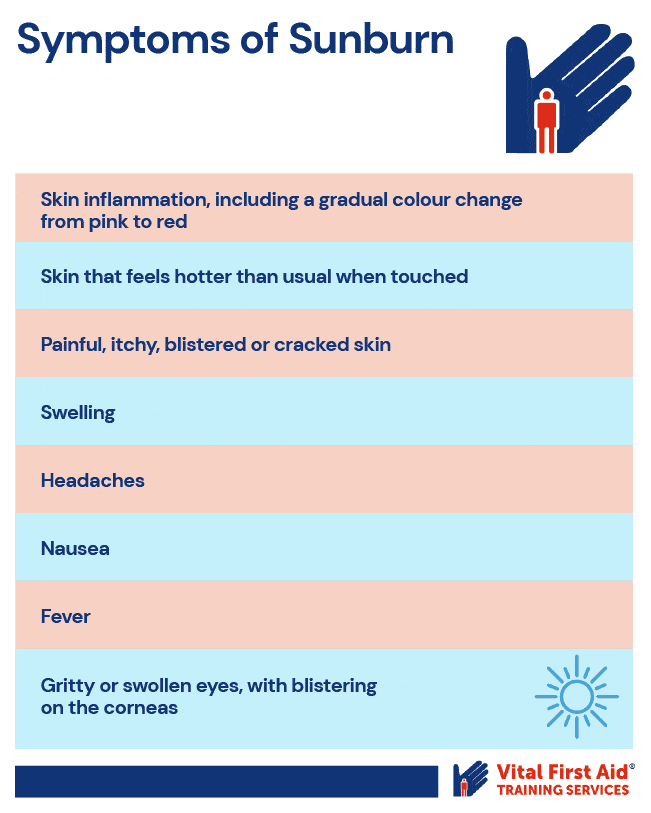
The problem with sunburn is that it creeps up on you. Once your skin has been damaged, there is often a delay before symptoms appear. Once they do, they usually continue to worsen over the next few hours.
So even if you don’t think you’re getting burnt, just remember it might already be too late.
If you do unfortunately get sunburnt, you’ll experience the following:
- Skin inflammation, including a gradual colour change from pink to red
- Skin that feels hotter than usual when touched
- Painful, itchy, blistered or cracked skin
- Swelling
- Headaches
- Nausea
- Fever
- Gritty or swollen eyes, with blistering on the corneas
Remember, you may feel any combination of these, with later symptoms appearing if your sunburn is particularly bad because your body is going through a shock response.
How to Provide First Aid for Sunburn
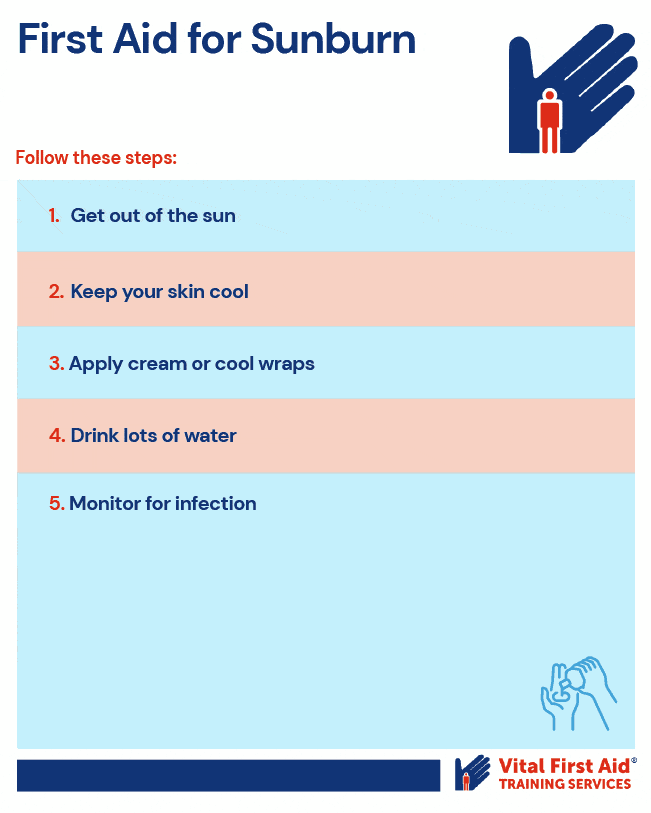
First aid for sunburn is best provided as soon as possible after you realise sunburn has occurred.
1. Get out of the sun
This may seem obvious, but people often think, “Well the damage is already done, I may as well stay outside.” This is a mistake.
Not only will further sunburn make your symptoms worse and last longer, but once your skin is damaged it provides less protection against UV rays. So the longer you stay out with compromised skin, the more you risk cancer and faster ageing.
2. Keep your skin cool
Once you’re out of the sun, cool your skin to help reduce inflammation and relieve pain. You can take a cool shower or bath or apply cool, damp towels to the affected area. Avoid using ice or very cold water, as this can cause further damage to your skin. It can also be painful given your skin will be extremely tender.
Another option is cooling wraps. Use gel packs or damp cloths to cover sunburnt areas. Leave them on for 15 minutes at a time for more effective relief.
3. Apply cream
After you have cooled your skin, apply a soothing cream or lotion that contains aloe vera. Aloe vera has anti-inflammatory properties that can help reduce redness and swelling and promote healing.
If your sunburn is particularly bad, nonprescription 1% hydrocortisone creams may help soothe more than regular moisurisers or consider consulting a medical practitioner.
4. Drink water
Just like a regular burn injury, sunburn can cause dehydration because your body needs to divert water to the damaged skin to keep you cool. That’s why it’s essential to drink plenty of water to rehydrate your body. Aim to drink at least eight glasses of water a day, and avoid alcohol and caffeine, which can further dehydrate your body.
5. Monitor for infection
One of the most important things when dealing with sunburn is making sure you don’t damage your blisters. Blisters can contain pus that will spread infection if broken, while also creating open sores which can also become infected.
Given large surfaces of skin can be burnt at one time, infections can quickly chain together to become life-threatening if they progress to sepsis.
When Should You See a Doctor for Sunburn?
Sunburn usually isn’t serious enough to require a doctor’s visit. However, if you feel extreme symptoms like a fever that don’t persist, you should get professional help.
Other reasons are signs of infection, or if eye sunburn has caused impaired vision. For small children, and particularly severe sunburn can take a greater toll on their body, so if you are concerned you should seek medical advice.
How to Prevent Sunburn
Given first aid for sunburn can only ease, rather than fix symptoms, the best treatment is prevention.
Wear Sunscreen
The best way to protect your skin from the sun is by wearing sunscreen. Choose a broad-spectrum sunscreen with an SPF of at least 30-50, and apply it generously to all exposed skin. Remember, any exposed skin can burn, including your ears, between your fingers and toes, and your scalp.
Be sure to reapply every two hours, or more often if you’re swimming or sweating. If you’re struggling to apply it in hard-to-reach areas, ask for someone to help you.
Be sure to reapply every two hours, or more often if you’re swimming or sweating. If you’re struggling to apply it in hard-to-reach areas, ask for someone to help you.
Wear Adequate Clothing
Wearing protective clothing helps prevent sunburn. Choose clothes made from tightly woven fabrics that cover as much skin as possible, such as long-sleeved shirts and pants. Plus, don’t forget to wear a wide-brimmed hat and sunglasses to protect your face and eyes. Think back to your school days – no hat, no play!
Seek Shade
Seek shade during the hottest part of the day, usually between 10 am and 4 pm. This can help reduce your exposure to UV rays and lower the risk of sunburn. Even something as simple as bringing a sun umbrella to the beach can make a huge difference!
Avoid High UV Conditions
Pay attention to the UV index and try to avoid being outdoors when the index is high, usually 3 or above. At the very least, make sure you’ve followed the above three prevention measures if being in the sun is unavoidable. Plan outdoor activities for the early morning or late afternoon, when the sun’s rays are less intense.
Also, remember that it doesn’t necessarily have to be ‘sunny’ for you to get sunburnt. UV has nothing to do with how bright or hot the sun feels, and overcast days can actually be more dangerous because the clouds magnify the UV rays.
Have You Considered a First Aid Course?
Now that you have more confidence in providing first aid for sunburn, have you considered learning how to provide different kinds of first aid?
Vital First Aid offers realistic training courses for a wide range of other first aid types. Rest assured they’ll teach you to stay calm and composed when faced with stressful first aid situations.

